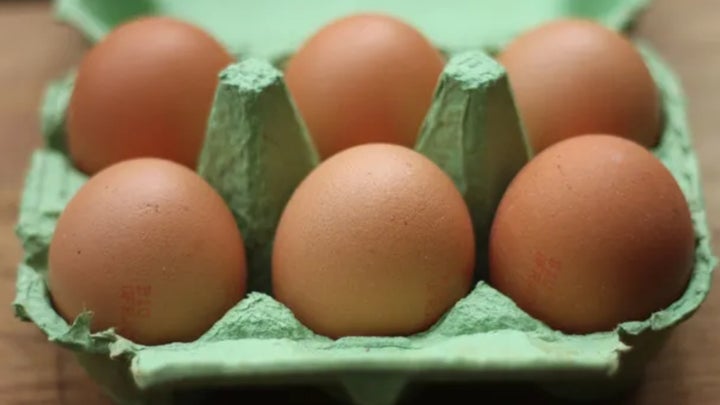
We’ve written before at HuffPost UK about what those two vertical lines in the dot of the “i” in Twix’s logo mean.
We’ve even shared the little-known link between the pot on the front of Marmite’s packaging and the brand’s name.
But what about plain ol’ eggs? They don’t have a brand as such (Big Ovum hasn’t consolidated a logo yet), but all of them have those inscrutable, usually red stamps.
Do they have a code, like the Julian dates on the outside of some veg packets?
Yep, basically
The stamps on the shells of your eggs follow a pretty simple system, apparently.
According to Food Safety Guru, who specialises in (you guessed it) food safety, “Class A eggs must be stamped with a code such as 0 UK54321, and British Lion eggs also have a best before date and carry the Lion logo.”
The first number relates to how the chickens that laid the eggs are kept.
0 means the eggs are classified as “organic,” 1 means they’re “free-range,” 2 signifies chickens kept in a barn, and 3 is reserved for cage eggs.
This can also sometimes be written, eg F/RANGE for free-range.
After that number comes the place the eggs came from, so it may read 0 UK... if they’re organic British eggs.
Then, you’ll see the farm ID ― this can appear as a random set of letters, like UK89897.
Last comes the best-before date, written more clearly as BB02 SEP.
So, 0 UK11111 BB30AUG would be organic UK eggs from a farm whose code is 111111. Their best-before date is the 30th of August.
Additionally, in the UK, the Lion mark means the chickens have been vaccinated against salmonella.
How do they stamp the eggs without breaking the shell?
Writing this made me wonder how they get the ink on the shell in the first place without cracking the produce.
But a peek at food processing machine manufacturer Taizy’s video, mass-packaged eggs go through an inkjet printer machine.
The Happy Egg Co. uses a machine that gently presses inked rubber stamps down onto multiple eggs at once, however. You can also buy manual egg stamps online.
These are simply too soft ― thanks to their rubber tip ― to break the shell.
The more you know...